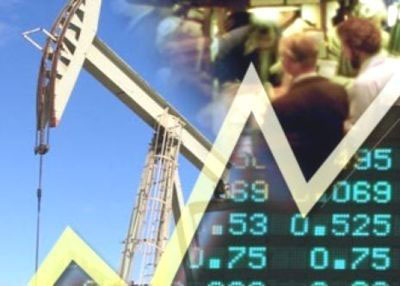Baku, Azerbaijan, July 12
By Vagif Sharifov – Trend:
The dynamics of the North Sea Brent oil prices in June showed the smallest lag for the recent year and a half and the highest average price since early 2016 - $48.24 per barrel. The last month was the first in a period of low prices when Brent average spot price (FOB) decreased by a minimum of $13.23 per barrel compared to June 2015. All other months of 2016 showed a greater lag - from $17.06 per barrel to a maximum of $25.91 per barrel compared to the same period of 2015.
Although Brent oil average price since early 2016 is still less than last year’s price - $39.8 per barrel compared to $57.84 per barrel, 2016 looks more resolute than the previous one in terms of oil price stability. For example, the modal value for Brent oil prices lag amounted to about $50 per barrel within six months of 2015 compared to the same period of 2014; while the same value is nearly three times less - $17 per barrel in 2016 compared to 2015.
The oil prices increased in June and on average in the second quarter due to a two-fold decrease of the global market glut up to 1.09 million barrels per day compared to 2.58 million barrels oversupply in the first quarter. Besides a decrease in glut, the growth of demand for crude oil up to 93.25 million barrels per day compared to 93.09 million barrels per day in the first quarter also contributed to an increase in oil prices.
These factors, as well as the BREXIT speculations, failures in oil supply from Nigeria and Canada have led to the average price of Brent to $45.52 per barrel in the Q2 of 2016, which is by $11.83 more than in the Q1 of 2016.
Average prices for Brent (FOB, spot) in 2014-2016:
|
Month |
2014 |
2015 |
+/- 2015 compared to 2014 |
2016 |
+/- 2016 compared to 2015 |
|
January |
108.11 |
47.75 |
-60.36 |
30.69 |
-17.06 |
|
February |
108.9 |
58.09 |
-50.81 |
32.18 |
-25.91 |
|
March |
107.48 |
55.88 |
-51.6 |
38.21 |
-17.67 |
|
April |
107.75 |
59.52 |
-48.29 |
41.58 |
-17.94 |
|
May |
109.54 |
64.07 |
-45.57 |
46.74 |
-17.33 |
|
June |
111.79 |
61.47 |
-50.32 |
48.24 |
-13.23 |
|
Source: EIA. Prices are in dollars per barrel |
|||||
There are prospects for growth in oil prices in 2017, at least, due to OPEC’s expectations related to the growth in global oil demand up to 95.33 million barrels per day compared to 94.18 million in 2016. However, the increase in oil prices can be suppressed by Iran’s plans to increase its own oil production to compensate the income shortfall during the sanctions’ period. One of the top managers of the National Iranian Oil Company said in July that Tehran plans to increase oil export from two million barrels per day to four million barrels per day. Obviously, Iran is waiting for an economically attractive oil prices, so at the first advantageous opportunity to supply additional two million barrels of oil per day on the market. However, there are experts in Tehran who disagree with the country’s energy policy. For example, one of the members of the Iranian parliament thinks that it would be more profitable to export only 400,000 barrels of oil per day while the rest 1.6 million barrels could be sent to the refinery. The MP thinks Iran can significantly strengthen its position in the European oil products market since there are the decline in refining capacity in Europe.
Taking into account the Iran’s plans to increase the oil output, OPEC’s constantly violating its own quotas, fears of Russia, Saudi Arabia and now the US to lose their oil market share, the recent statements of OPEC heads about getting closer to the world oil market balance look not clear. One of the reasons of this obscurity is BREXIT which has a significant impact on the market. In fact, BREXIT’s impact on the market can be postponed, as it was in the case of Lehman Brothers’ bankruptcy when the commodity markets went down only after six months. Taking into account London’s role in the world financial market, one can presume that the delayed influence of BREXIT will be significant.
International financial institutions and various consulting companies do not expect the oil prices to exceed $60 per barrel in 2016 or 2017. The IMF has the lowest forecast standing at $36 per barrel in 2016 and $42 in 2017.
The UK Capital Economics believes that the price for Brent will be $42 per barrel and $45 in the third and fourth quarters of 2016, respectively. The price for Brent will reach $50, $55 and $57.5 per barrel in the first, second and third quarters of 2017, respectively.
EIA experts believe that the price for Brent oil will be around $43 per barrel in 2016 and $51 in 2017.
Analysts of the US JP Morgan forecast that the average price for Brent will amount to $45.3 per barrel in 2016 and $55 per barrel in 2017. Goldman Sachs believes that the price for Brent can reach $50 per barrel only in the second half of 2016, while according to the World Bank’s forecasts, this is possible only in the first half of 2017.
Vagif Sharifov is an analyst and expert in oil and gas markets.
Follow him on Twitter: @VagifSharifov






